The title of this blog is a dictate that is drummed in to authors – show the reader, don’t lecture the reader.

A few years ago we were told that the e-book was overtaking the printed book in popularity – today I am not all that sure. I have an old adage that if I think something is not true or not quite right, I know that many others will think along similar lines.
Political spin on any subject brings out the scepticism in me (some call it grumpy old man syndrome), and when reporters throw out huge numbers, for whatever reason, I cannot help but do a quick mental arithmetic (I am old enough not to require a calculator), to see if the statement is credible or just journalistic spin to grab attention.
I have a feeling that the e-book ‘revolution’ may have faltered and printed books are still as popular as ever. I believe that the reading public still like the ‘feel’ of a book and the ability to skip backwards and forwards easily through the pages.
As a reader who haunts second hand book shops, school fetes, library sell offs etc for that particular ‘must have’ book, I am certain I am not Robinson Crusoe. While hunting for the elusive paperback it never occurs to me to check to see if I can buy it as an e-book.
With book prices in Australia being in the $18 / $19 to $30 area for a paperback, I am a strong supporter of Book Depository for the same book at half the Australian price. The wait of eight to ten days is not a problem. I only buy authors that I have read, I never buy unknown paperback authors, because of price.
This is where the e-book comes in to its own. The e-book world allows me to find new authors to read at a reasonable cost. The cost factor, if I don’t like the book is small, but if I do like the e-book, the author’s name goes on my buy list for a printed book as well as their latest e-book. If the author only publishes e-books, so much the better for my pocket.
Over the last few years I’ve read a number (about seventy) of independent self-published e-books and thought it was about time that I passed on information about some of the novels that I have enjoyed. The list is in alphabetical by author, not in any preferential order. The percentages have been taken from Amazon, so the percentages could well be higher when taking all sales in to account.
Mario Almonte – American author.
Of the reviews 80% were 4 * & 5*
Theresa Manning
 The location of the story is set in present day New York & Boston. After the first few pages I realised that this author is no novice when it comes to writing. I had not heard of him or read any of his work before I read `Theresa Manning’. His writing is smoooooth, if that word can be used in this context.
The location of the story is set in present day New York & Boston. After the first few pages I realised that this author is no novice when it comes to writing. I had not heard of him or read any of his work before I read `Theresa Manning’. His writing is smoooooth, if that word can be used in this context.
The story is a relationship, rather than an action tale, which flows effortlessly from scene to scene. The author brings the characters to life, and at times drops in some great quotes `The wheels of a generation, the mouths of the moment’ referring to a wayside diner. When I read the quote it fitted perfectly in to that particular scene. The relationship aspect of the story has not created a standard romantic novel, it is different, because the author creates tension between each of the characters as he pushes the story to its final conclusion. It is a sharp concise novel that will entertain and linger in the mind after you have read the final page.
John Campbell – American author
Of the reviews 93% were 4 * & 5 *
Walk to Paradise Gardens
 John Campbell’s historical novel `Walk to Paradise Gardens’ is a saga that begins during the early days of WW1, and the reader follows a family through all of their troubles.
John Campbell’s historical novel `Walk to Paradise Gardens’ is a saga that begins during the early days of WW1, and the reader follows a family through all of their troubles.
The story captivated me from the first few pages as I read his descriptions of the medical areas behind the lines in WW1. The author brought the whole horror of this war to life. Later, his descriptions of London in the 1920’s & 30’s has your mouth watering as he describes the simple act of taking tea and cakes in an `acceptable’ (for the wife of a political minister) café. Campbell has the ability to capture the period, regardless of the decade. The historic detail enhances the story without overwhelming the reader with facts. A love story to be read and enjoyed at leisure.
A Lark Ascending –
Of the reviews 100% were 4 * & 5*

Rating this book as a five star read was no effort at all. The author has really captured the Lime House area of London during the early 1920’s. I could feel the damp, smell the river, and feel the fear of being out and about after dark during those dark days. John Campbell’s ability to research the times, and the places about which he writes, is always spot on. This is the second of Mr Campbell’s books that I’ve read and enjoyed, both are set around the same period; one in peacetime, and the other during the first world war. A must read for those who love accurate historic fiction.
V.R Christensen – American author
Of the reviews 72% were 4 * & 5*, which equated to 470 out of 653 reviews.
Of Moths & Butterflies

Being a mere male `Of Moths and Butterflies’ is not my normal type of book, but from the first page I was captivated by the characters and their situations.
The story is set in 1881 / 82 and takes place in Kent & London. The author has recreated the time and the place, and the life style of the various levels of society. The main character is a young woman who is being manoeuvred in to marriage because of a shameful act that was not her fault. I found myself wishing this young woman would take a swing at certain family members, but of course this was 1881, not 1981.
The author’s writing is rich in creating scenes, without being overbearing in detail. I read this book on a Kindle while travelling and I would regale my wife with bits and pieces of the story. Now the acid is on me to buy another Kindle so that she can read it, without me being `Kindleless’.
Robert Davidson – British author
Of the reviews 100% were 4* & 5*
The Tuzla Run –
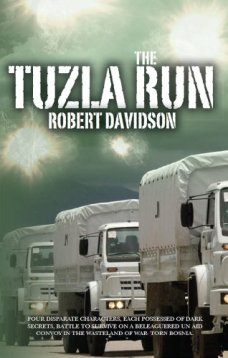
Davidson’s descriptive details of the various geographic areas, and the war damage in the Tuzla region (Boznia), comes across as personal experience rather than research. Once I started the story I found it hard not to keep reading the next page and the next and so on, even at the risk of lost sleep.
The author has produced an exciting story in the mould of the traditional `journey’ style of storytelling, coupled with credible heroic and cowardly characters. It seems to me that The Tuzla Run is tailor made for an action movie.
Susan Denning – American author
Of the reviews 75% were 4 * & 5*, which equated to 662 out of 883 reviews.
I am also aware that this author has sold nearly 200,000 e-book & paperback copies, plus it was released via an audiobook company, as an audio book.
Far Away Home

Far Away Home is a joy to read. Within the time it took to read the first page I was in to the story. Meeting the main character, Aislynn, in New York, is to step back in time. Denning has captured the time and places of the mid 1800’s in America. Her detailed research is not overpowering, but it does help you to feel the cold of winter, the joy of spring, the smell of the trees, which were cut down to create Aislynn’s home. In her desire for accuracy, I believe Denning drove a covered wagon through similar terrain as did her main character when she crossed the wide open spaces between New York and Utah. Denning experienced the trials of such transport and her personal experience adds credibility to the story.
The relationship between the characters moves the story steadily forward. They became real to this reader, so much so, that I was quite sad to reach the end of the book. Perhaps Ms Denning will favour us with a sequel, as I’m sure many of her readers would like to know what happens to Aislynn. If you are interested in the old American west, and you like strong characters, who stand up for themselves and their friends, then this is the book for you.
Laurel Lamperd – a saga over two books, Australian author
Of the reviews 100% were 4 * & 5*
This author has written a total of eight books.
Wind from Danyari

In addition to the central characters, the Hennessey family, who are rich in emotion and diverse, I found the author’s detailed description of the landscape and the hard climate of Western Australia, as stimulating as the human characters.
The scene is set with the arrival of the first Europeans to the area. This is followed by the introduction of Joe Hennessey, in the late 1800s, who, as a teenager, sets out to attempt to make his fortune in the gold fields of northern Australia.
The story flows as the author paints her characters to the harsh canvas of Australia between 1880 to the outbreak of WW1. The story has romance, tragedy and adventure, which are mixed with the way of life of two cultures. The ancient aboriginal way and the newcomers creates tension and sadness. I found the book to be a page turner. I believe that this book is the first in a series that chronicles the Hennessey family.
Of the reviews 100% were 4* & 5 *
The Hennessy boys go to war, Danny to England to be trained as a bomber pilot, and Will joins the Australian Army and is sent to New Guinea. The story begins in the time of innocence in Australia of 1939. The author showed me the lives of people in outback Australia of that time, and how their innocence changed as the war progressed.
Lamperd has the knack of describing the conditions of north west Australia to such an extent that she had my mouth dry from windblown sand, only to be washed clean in the next chapter by watered down beer in a London pub on a damp wet night, after a bombing raid over Germany. Her description of the Kakoda trail, the mud, the tropical heat and rain, with the expectation of fighting the Japanese brings to life the bestiality of man when at war.
It is not a story of war, but a story of a family caught up in a war. How relationships are made and broken, some deliberate others beyond control of the character. I read the book on a Kindle and after I’d finished, the characters and the locations stuck in my mind for days, even though I was travelling and seeing new places. A well told story.
While trying to find out if Ms Lamperd had written her third book in the Hennessy series, I read that she had died in June 2013. I also read that the third book in the series would be published posthumously, but I don’t know the title, or if it was published.
Ian Stewart – Australian author
Of the reviews 100% were 4 * & 5*
The Peking Payoff
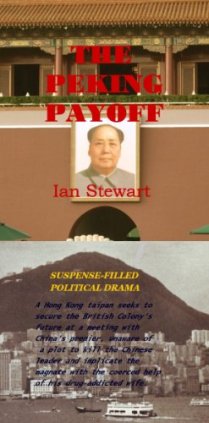
The story has the feel of James Clavell’s `Noble House’ without being a copy or fan fiction in any way. The detail description of Hong Kong in the 1970’s comes across as `real’ due to the author having lived and worked in the Colony (it was a colony in the 1970’s). The story has action, believable characters for the reader to either sympathise or hate, crafty `baddies’ and an exotic location. I enjoyed the story and wanted to know what happened next when I reached the end of the book. The ending didn’t leave me hanging and wondering what had happened, because it was the logical place to finish the story, without upsetting the reader, but it didn’t stop me wanting more!
The Unintentional Jihad
Of the reviews 100% were 4 * & 5*

The Unintentional Jihadi is a damn good yarn. Fast paced and exciting. The author writes about what he knows . . .his knowledge of Malaysia and Singapore adds authenticity to the story. Using details in the book you could drive from Singapore to Kuala Lumpur, and drive around KL without your GPS.
In parts the story reminded me of the `39 Steps’ by John Buchan – the reluctant hero being chased by the baddies, who might be good or bad . . . , but you have to read the book to find out the truth!
Nanyang
Of the reviews 72% were 4 * & 5 *
 At around 650 pp Nanyang is a solid book. The detail of the history surrounding a particular event in which a character becomes involved is engrossing. My hobby is Asian history so the back ground of the various events was right up my street.
At around 650 pp Nanyang is a solid book. The detail of the history surrounding a particular event in which a character becomes involved is engrossing. My hobby is Asian history so the back ground of the various events was right up my street.
The author has a great love of research, and Asian history, and this shows as the story unfolds. I must say I particularly liked the author’s description of various battle & fight scenes. He never tried to alter history, but he did bring to life the skirmishes and battles of the period, and used them with great effect to move the story forward. I found myself reading faster and faster to reach the climax of a particular battle, even though I was aware of the historical outcome. The book was a pleasure to read.
K. P. Vorenberg – American author
Of the reviews 100% were 4 * & 5*
Tierra Red

I haven’t read many books set in New Mexico, but I was looking for something different to help pass the time on a long-haul flight from Sydney to Europe, so I chose `Tierra Red’. I wasn’t disappointed, the story flowed and I felt I’d learned something new about the region, which is where the story was set. The characters were believable, and fleshed out just enough to help create mental pictures – I was shown, without being told the various foibles of each character. The story is not a `gunslinger’ cowboy story, but a study of people and how they react under certain circumstances. It is obvious that the author has detailed knowledge of the New Mexico area, and her knowledge adds authenticity to the story. I enjoyed the novel, and the author’s style made the book a very welcome read on such a long flight.
Marianne Wheelaghan – British author – Scottish – Of the reviews 92% were 4 * & 5*
The Blue Suitcase
 I finished The Blue Suitcase and found it to be a fascinating book. The story is `now’ rather than the reader being told about the political situation of Germany in the 1930’s. In many ways it is a happy / sad story of a young girl growing up in Germany, during that disturbing decade. The author held my attention throughout the book – not once did I skip forward, because I wanted to know every detail of the main character’s life. The story is wrapped around the changing political situation with its highs and lows, the broken political promises and broken family relationships. A bitter sweet story that reminded me of a symphony that builds from the pleasant tones of everyday life to the crashing finish of a destroyed Germany. A novel it may be, but I have a feeling that there is more to this story, for this author, than just a novel.
I finished The Blue Suitcase and found it to be a fascinating book. The story is `now’ rather than the reader being told about the political situation of Germany in the 1930’s. In many ways it is a happy / sad story of a young girl growing up in Germany, during that disturbing decade. The author held my attention throughout the book – not once did I skip forward, because I wanted to know every detail of the main character’s life. The story is wrapped around the changing political situation with its highs and lows, the broken political promises and broken family relationships. A bitter sweet story that reminded me of a symphony that builds from the pleasant tones of everyday life to the crashing finish of a destroyed Germany. A novel it may be, but I have a feeling that there is more to this story, for this author, than just a novel.
Geoff Woodland – Australian, author – but also British – half Welsh / half English, I’m still very fond of the UK, but not the weather :-o)
Ice King
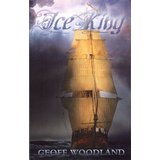
Modesty forbids me to comment on this novel, but if you wish to know what others think, try this link.
http://www.geoffwoodland.com/#reviews-and-comments





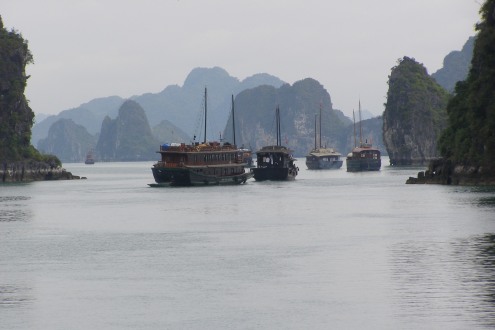 Later our junk rigged the sail, but at the beginning we used the engine.
Later our junk rigged the sail, but at the beginning we used the engine.




 You can see how large the caves are as the visitors walk along the man made paths.
You can see how large the caves are as the visitors walk along the man made paths. You can just see the fence posts to designate the path way.
You can just see the fence posts to designate the path way.














 Followed by a three and a half hour drive back to Hanoi.
Followed by a three and a half hour drive back to Hanoi.

 Part of Crater City Aden
Part of Crater City Aden


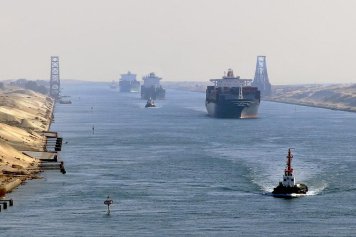 The above illustrates how a ‘convoy’ transits the Suez Canal
The above illustrates how a ‘convoy’ transits the Suez Canal








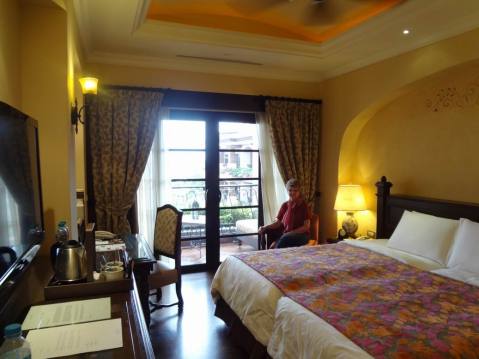












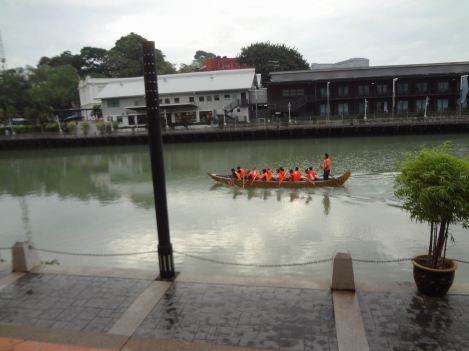






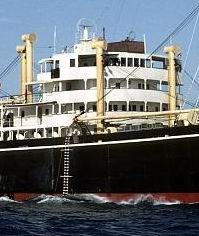

 Two BI ships working cargo from barges.
Two BI ships working cargo from barges.

 The loading was very labour intensive – loading a few chests of tea in to a cargo net, which would be brought on board and lowered in to the hold. A different labour gang would unload the net and then stack the tea chests in the appropriate area of the hold. In the meantime the empty cargo net is sent back for another load. This process started in the cool of the morning until lunchtime. After a lunch break the loading carried on until late afternoon. At night we would rig the cargo tents over the holds just in case of rain.
The loading was very labour intensive – loading a few chests of tea in to a cargo net, which would be brought on board and lowered in to the hold. A different labour gang would unload the net and then stack the tea chests in the appropriate area of the hold. In the meantime the empty cargo net is sent back for another load. This process started in the cool of the morning until lunchtime. After a lunch break the loading carried on until late afternoon. At night we would rig the cargo tents over the holds just in case of rain.
 A small part of the beautiful beaches at Trinco where we had a BBQ.
A small part of the beautiful beaches at Trinco where we had a BBQ.






 I’ve marked the position of Das Is – under the ‘er’ of Persian under lined in cream.
I’ve marked the position of Das Is – under the ‘er’ of Persian under lined in cream.







 Shatt al Arab river near Basrah
Shatt al Arab river near Basrah They do say that photographs don’t lie – they do, because I’ve never seen the Shatt al Arab look so blue and attractive.
They do say that photographs don’t lie – they do, because I’ve never seen the Shatt al Arab look so blue and attractive. Instead of watermelon pips we swapped dunnage for pistachio nuts; we didn’t spit, but flicked the shells across the water. Iran, being the largest producer of this nut ensured we had a regular supply.
Instead of watermelon pips we swapped dunnage for pistachio nuts; we didn’t spit, but flicked the shells across the water. Iran, being the largest producer of this nut ensured we had a regular supply.
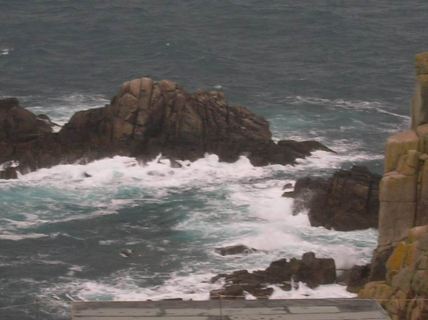
 Helmsman certificate
Helmsman certificate
 Radar certificate.
Radar certificate.




 hat, which came in handy some years later in Leningrad (now called St Petersburg), where I swapped a ball point pen for a comrades red star!
hat, which came in handy some years later in Leningrad (now called St Petersburg), where I swapped a ball point pen for a comrades red star! LEFO
LEFO The wild coast of Land’s End
The wild coast of Land’s End

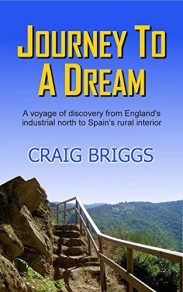 83% 4 & 5 * reviews
83% 4 & 5 * reviews A light, but an interesting read. I enjoy books where people step outside their normal comfort zone and make a ‘go’ of the change.
A light, but an interesting read. I enjoy books where people step outside their normal comfort zone and make a ‘go’ of the change. I like `off centre’ books that tell of personal desires to create, or complete tasks, that others might find a little `odd’. I came across `Vic’s Big Walk’ on Amazon while looking for something to read during an anticipated long flight. Not knowing anything about the author or his goals the thought of someone recording his effort to walk from the Pyrenees to Blackpool at seventy years of age, sparked my desire for an off centre read. I was not disappointed, as the author’s prose is very readable. He drew me in to his, and his wife’s, life as he walked nearly 2000 kilometers towards his childhood home town in the UK. His observations of the people he meets and the places he visits, along with his daily stop for coffee, creates a feeling that the reader is looking over the author’s shoulder and is part of the experience. I thoroughly enjoyed Vic’s Big Walk and at the end of the book I was pleased to note that all profits from the sales would go to pancreatic cancer research – a cancer that caused the early death of my own father.
I like `off centre’ books that tell of personal desires to create, or complete tasks, that others might find a little `odd’. I came across `Vic’s Big Walk’ on Amazon while looking for something to read during an anticipated long flight. Not knowing anything about the author or his goals the thought of someone recording his effort to walk from the Pyrenees to Blackpool at seventy years of age, sparked my desire for an off centre read. I was not disappointed, as the author’s prose is very readable. He drew me in to his, and his wife’s, life as he walked nearly 2000 kilometers towards his childhood home town in the UK. His observations of the people he meets and the places he visits, along with his daily stop for coffee, creates a feeling that the reader is looking over the author’s shoulder and is part of the experience. I thoroughly enjoyed Vic’s Big Walk and at the end of the book I was pleased to note that all profits from the sales would go to pancreatic cancer research – a cancer that caused the early death of my own father. A very interesting story. I am of a similar age to the author, so his book brought back a lot of memories of my youth. The influence, of the company created by the author, on the music world, comes alive without it being a brag about the author’s accomplishments. I read this while on holiday and found it strange that it stuck in my mind long after I’d finished the book. If you are interested in the history of how they created popular music in the 60’s & 70’s this is the book for you. 85% 4 & 5 * reviews
A very interesting story. I am of a similar age to the author, so his book brought back a lot of memories of my youth. The influence, of the company created by the author, on the music world, comes alive without it being a brag about the author’s accomplishments. I read this while on holiday and found it strange that it stuck in my mind long after I’d finished the book. If you are interested in the history of how they created popular music in the 60’s & 70’s this is the book for you. 85% 4 & 5 * reviews

 Overall I enjoyed the book, it was an easy read, and each chapter could be read as a stand-alone piece, if the reader had a particular interest in a specific destination.
Overall I enjoyed the book, it was an easy read, and each chapter could be read as a stand-alone piece, if the reader had a particular interest in a specific destination. I haven’t met the author, nor heard of her as a filmmaker, but she e-mailed me and asked if I would like to read her book. I checked the outline of the book and found that she worked as a young woman in Afghanistan filming news items, and this sounded interesting, so I agreed.
I haven’t met the author, nor heard of her as a filmmaker, but she e-mailed me and asked if I would like to read her book. I checked the outline of the book and found that she worked as a young woman in Afghanistan filming news items, and this sounded interesting, so I agreed.



 The location of the story is set in present day New York & Boston. After the first few pages I realised that this author is no novice when it comes to writing. I had not heard of him or read any of his work before I read `Theresa Manning’. His writing is smoooooth, if that word can be used in this context.
The location of the story is set in present day New York & Boston. After the first few pages I realised that this author is no novice when it comes to writing. I had not heard of him or read any of his work before I read `Theresa Manning’. His writing is smoooooth, if that word can be used in this context. John Campbell’s historical novel `Walk to Paradise Gardens’ is a saga that begins during the early days of WW1, and the reader follows a family through all of their troubles.
John Campbell’s historical novel `Walk to Paradise Gardens’ is a saga that begins during the early days of WW1, and the reader follows a family through all of their troubles.







 At around 650 pp Nanyang is a solid book. The detail of the history surrounding a particular event in which a character becomes involved is engrossing. My hobby is Asian history so the back ground of the various events was right up my street.
At around 650 pp Nanyang is a solid book. The detail of the history surrounding a particular event in which a character becomes involved is engrossing. My hobby is Asian history so the back ground of the various events was right up my street.
 I finished The Blue Suitcase and found it to be a fascinating book. The story is `now’ rather than the reader being told about the political situation of Germany in the 1930’s. In many ways it is a happy / sad story of a young girl growing up in Germany, during that disturbing decade. The author held my attention throughout the book – not once did I skip forward, because I wanted to know every detail of the main character’s life. The story is wrapped around the changing political situation with its highs and lows, the broken political promises and broken family relationships. A bitter sweet story that reminded me of a symphony that builds from the pleasant tones of everyday life to the crashing finish of a destroyed Germany. A novel it may be, but I have a feeling that there is more to this story, for this author, than just a novel.
I finished The Blue Suitcase and found it to be a fascinating book. The story is `now’ rather than the reader being told about the political situation of Germany in the 1930’s. In many ways it is a happy / sad story of a young girl growing up in Germany, during that disturbing decade. The author held my attention throughout the book – not once did I skip forward, because I wanted to know every detail of the main character’s life. The story is wrapped around the changing political situation with its highs and lows, the broken political promises and broken family relationships. A bitter sweet story that reminded me of a symphony that builds from the pleasant tones of everyday life to the crashing finish of a destroyed Germany. A novel it may be, but I have a feeling that there is more to this story, for this author, than just a novel.